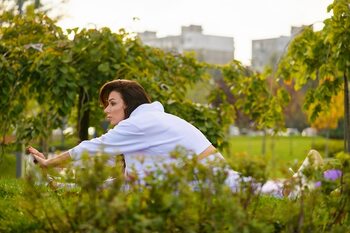The role of local culture in real estate value

Local culture plays a crucial role in the valuation of properties, whether in urban or rural settings. In Costa Rica, cultural diversity and local traditions not only enrich daily life but also influence buying and selling decisions in real estate. From the charm of a rural village to vibrant urban life, understanding how these cultural elements impact the real estate market is essential for those looking to maximize their investment. Discover how location and appreciation intertwine with our Costa Rican roots.
The influence of local traditions on the real estate market.
Local traditions have a significant impact on the perception and value of real estate. In Costa Rica, each region has a unique set of customs and festivities that attract both residents and tourists. For example, in rural communities where traditional fairs or patron saint festivals are celebrated, houses close to these events tend to have higher demand. This connection between housing and local culture not only creates a sense of belonging but can also result in an appreciation of property values as they are considered more desirable by those looking to live immersed in these traditions.
On the other hand, in urban areas, the influence of culture is manifested through architecture, public spaces, and available cultural activities. Neighborhoods that promote a vibrant artistic or gastronomic environment tend to attract young buyers and professionals seeking an active lifestyle filled with experiences. Art galleries, local markets, and urban festivals not only enrich daily life but also elevate the neighborhood's profile, which can result in a substantial increase in real estate value. Thus, understanding how these traditions influence the market helps investors make more informed decisions about where to buy or sell properties.
2. Comparison between the value of rural and urban properties.
The comparison between the value of rural and urban properties reveals how local culture influences the buyer's perception. In urban areas, proximity to services such as schools, hospitals, and shopping centers tends to elevate property values. However, there is also a strong cultural component in these environments that manifests in architecture, festivals, and community life. This urban context not only attracts those seeking comfort and access to resources but also generates a sense of belonging that can further increase real estate value.
On the other hand, rural properties offer a unique appeal due to their connection with nature and local traditions. The quieter lifestyle, along with the cultural authenticity of Costa Rican towns, makes many people consider these areas as ideal retreats to escape the urban hustle. Although the price per square meter is usually lower than in cities, factors like rural tourism or sustainable development projects are beginning to increase their value. Thus, local culture in these spaces not only preserves valuable traditions but also has the potential to radically transform the rural real estate market.
3. How festivals and cultural events increase real estate appeal.
Cultural festivals and events are a powerful tool that not only celebrates the identity of a community but also attracts visitors and potential property buyers. In Costa Rica, festivals like Independence Day or the patron saint festivities not only showcase local traditions but also generate a sense of belonging among residents and create a vibrant atmosphere that can be highly appealing to those looking to settle in the area. This cultural dynamism contributes to increasing interest in homes in areas where these events take place, thereby raising their value in the real estate market.
Moreover, the organization of cultural events fosters local economic development, which in turn positively impacts the real estate sector. The arrival of tourists during festivals promotes businesses such as restaurants, craft shops, and lodging, creating a prosperous ecosystem that benefits property owners. This economic growth translates into a higher demand for residential and commercial properties in the area, increasing their value. Thus, festivals are not just temporary celebrations; they represent sustainable opportunities to enhance long-term real estate appeal in Costa Rican communities.
4. The impact of cultural tourism on rural appreciation.
Cultural tourism has emerged as a significant engine of development in rural areas, generating a direct impact on the added value of properties. By attracting visitors interested in experiencing local culture, rural communities not only manage to preserve their traditions but also boost their economy. This flow of tourists creates a growing demand for local accommodations and services, which in turn increases the value of real estate in the area. Properties near cultural sites, festivals, or traditional events become attractive to investors and buyers looking for both a second home and a business opportunity.
In addition to the increase in real estate demand, cultural tourism fosters a sense of community and belonging among residents. The value of properties is not only measured by their geographical location but also by the cultural heritage they offer. Buyers are increasingly aware of the added value of living near authentic cultural manifestations, such as craft fairs or culinary traditions. Thus, the integration of cultural tourism with the rural real estate market not only benefits those looking to invest but also contributes to the sustainability and preservation of the local cultural legacy for future generations.
5. The importance of architectural heritage in urban areas.
Architectural heritage in urban areas is a tangible reflection of the history and cultural identity of a community. Historic buildings, emblematic squares, and structures that have withstood the test of time not only beautify the environment but also tell stories that connect inhabitants with their past. This architectural legacy attracts both residents and visitors, generating a sense of belonging and local pride. When an urban area is characterized by a rich architectural heritage, it creates a favorable environment for the development of cultural, artistic, and commercial activities, which in turn elevates the real estate value of properties in that area.
Furthermore, the preservation of architectural heritage directly contributes to the tourist appeal of a region. Tourists are increasingly aware of the importance of authentic and local experiences, seeking not only to enjoy modern comforts but also to connect with the cultural essence of the place they visit. This translates into a growing interest in buying or investing in properties near these architectural gems. An urban environment that values and cares for its heritage not only strengthens its local economy through tourism but also ensures greater appreciation for its real estate, thus making architectural heritage an invaluable asset within the real estate market.
6. Perspectives on sustainable urban development and its relationship with local culture.
Sustainable urban development is presented as an essential approach in the planning and management of cities, integrating environmental, social, and economic aspects. In this context, local culture emerges as a fundamental pillar that not only defines the identity of a community but also influences its growth dynamics. By considering local culture in urban development, a sense of belonging and social cohesion among residents is fostered, which can result in an increase in real estate value. Projects that respect and promote cultural traditions tend to attract both local buyers and investors looking for unique spaces with character.
The relationship between sustainable urban development and local culture goes beyond aesthetic preservation; it involves a deep integration that enhances quality of life. For example, by designing public spaces that reflect the customs and traditions of the community, an appealing environment for living and working is created. This not only benefits current residents but also attracts the interest of visitors and new tenants seeking authentic experiences. Thus, respect for local culture becomes a driver for sustainable development, elevating real estate value by creating vibrant communities where cultural roots are valued and celebrated.
7. Success stories: rural communities that have increased their value through their culture.
The rural communities of Costa Rica have proven to be inspiring examples of how local culture can significantly elevate real estate value. In places like the town of Sarchí, known for its wood craftsmanship and colorful carts, it has managed to attract both tourists and buyers interested in properties that not only offer a home but also an authentic connection to Costa Rican traditions. The promotion of cultural events, fairs, and creative workshops has enhanced its appeal, making real estate investment in this area increasingly desirable. This phenomenon highlights how a strong cultural identity can be a driver for economic development and property valuation.
Another notable example is the community of Monteverde, famous for its biodiversity and ecotourism. The rich cultural heritage that promotes respect for nature has attracted those seeking not only a place to live but also a lifestyle that celebrates sustainability. Thanks to community initiatives that encourage traditional agricultural practices and educational projects on environmental conservation, property prices have increased significantly. Thus, these communities not only preserve their cultural identity but also transform their real estate environment into a valuable space for investors and residents alike.
8. Tips for investors: where to look for opportunities according to local culture?
When it comes to investing in real estate, it is essential to understand the local culture and how it can impact investment opportunities. For example, in Costa Rica, the cultural traditions and lifestyle of each region can attract different types of buyers. In coastal areas, where the surf and relaxation culture predominates, investors may find a market eager for vacation properties. On the other hand, in urban areas like San José, where nightlife and cultural activities are more intense, there is a growing demand for apartments and condominiums that offer comfort and access to services. Therefore, researching not only the geographical location but also the cultural fabric of the place is key to identifying where the best opportunities lie.
It is also advisable to establish connections with local real estate agents who have a deep understanding of the community and its dynamics. These professionals can provide valuable information about emerging trends and developing areas that may not be immediately obvious. It is also beneficial to participate in community events or local fairs to immerse yourself in the culture and better understand the preferences of potential buyers or tenants. By aligning your investments with the cultural authenticity of each region, you will not only contribute to local well-being but also maximize the long-term value of your properties.
9. The future of the real estate market: cultural trends that will set the standard.
As the real estate market evolves, emerging cultural trends are beginning to have a significant impact on property valuation. More and more, buyers are seeking not just a home, but also a lifestyle that reflects their values and personal aspirations. In this context, aspects such as sustainability, access to community spaces, and the preservation of cultural heritage have become essential. Communities that foster social integration and promote cultural activities often see an increase in interest in their properties, highlighting the importance of considering these factors when assessing real estate value.
Moreover, globalization has allowed diverse cultural elements to intertwine in different regions, creating new paradigms about what it means to live in a specific place. The cities and communities in Costa Rica are embracing these changes by incorporating public art, local festivals, and indigenous cuisine as an integral part of their identity. This cultural blend not only attracts national and international buyers but also influences the overall perception of the area as an appealing destination for investment. Therefore, developers and real estate agents must stay attuned to these trends to adjust their offerings and business strategies in line with the changing expectations of consumers.



